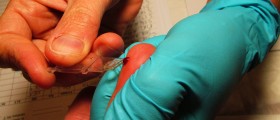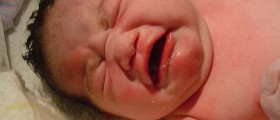
How is cord blood banking done?
As the phrase "cord blood" already indicates, the blood samples for cord blood banking are taken from the baby's umbilical cord. After the umbilical cord had been cut, blood can then be taken from the placental part of the umbilical cord. The cord blood banking procedure is therefore not painful or invasive to your baby, but cord blood banking is not compatible with delayed cord clamping, as there will not be enough blood to bank in that case.
There are many cord blood banking companies, which can be called in advance to arrange the procedure. Once the samples are collected, they will be taken to the relevant facilities where the cord blood is stored. You may also want to read our previous post on a related topic: Cord blood banking yes or no?
Choosing a cord blood bank
There are several cord blood banks available to you, if you live in the United States. Make sure that the bank you choose is accredited with the American Association of Blood Banks before opting to have the cord blood banking procedure done with any bank. The initial cord blood banking fee ranges from $900 to $2100, and there is also a storage cost annually. There are different options in terms of the storage period, so that is something you will want to discuss with blood banks before you make the decision.
















Your thoughts on this
Loading...